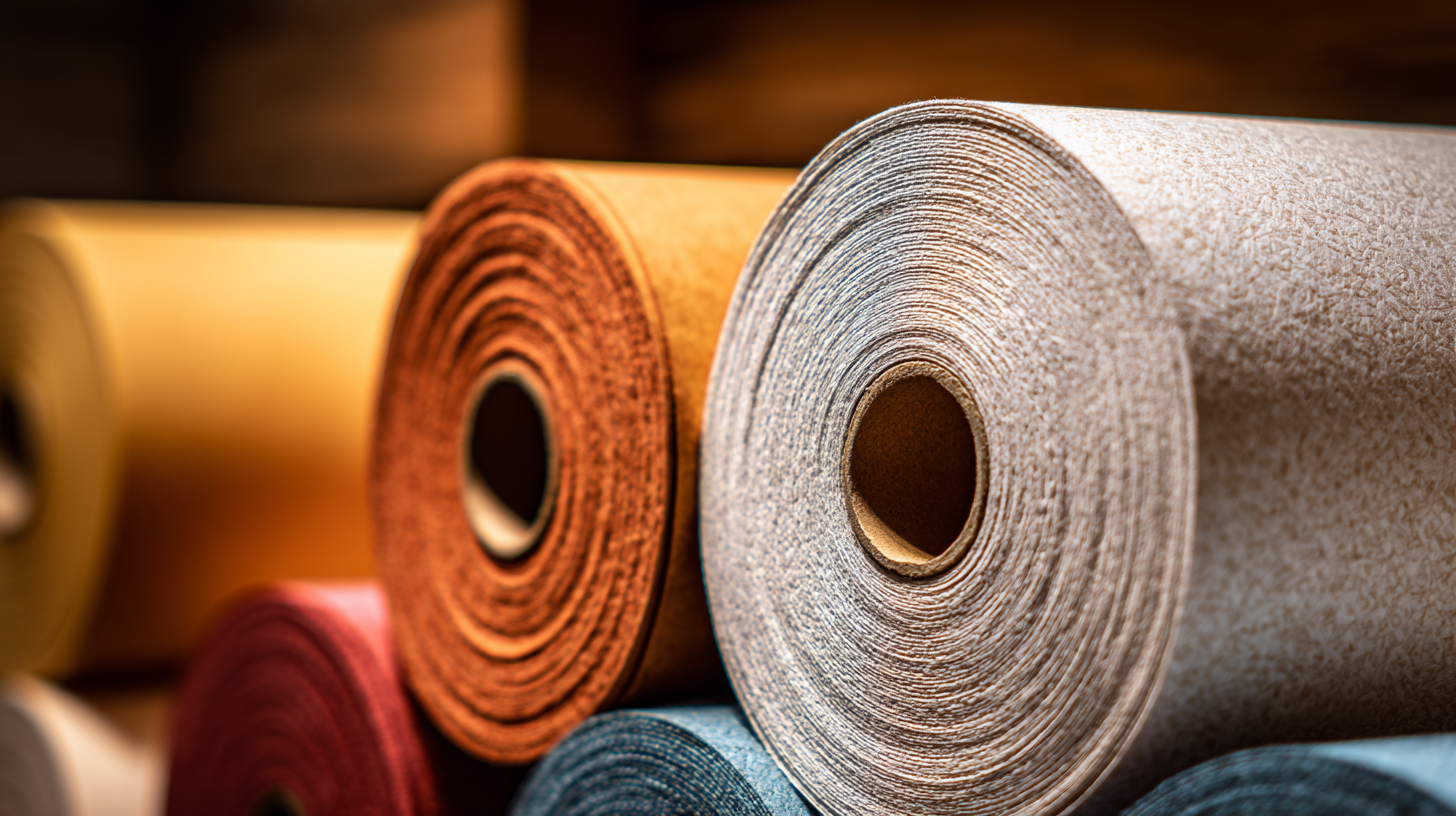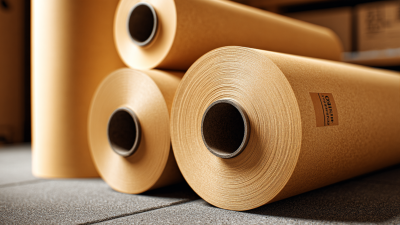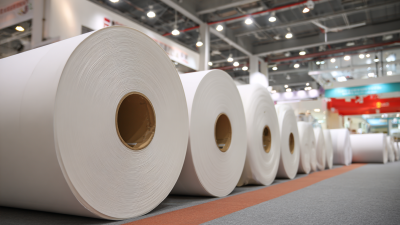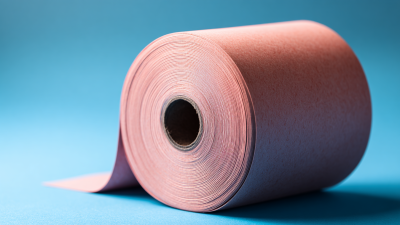In the fast-paced world of modern business, the choice of equipment and supplies can significantly impact operational efficiency and customer satisfaction. One often-overlooked yet essential component is the paper receipt rolls used in point-of-sale systems. These Paper Receipt Rolls not only facilitate smooth transactions but also play a crucial role in branding and customer communication. Choosing the right type of paper receipt roll is vital for any business, as various factors such as size, compatibility, thermal properties, and eco-friendliness come into play. This guide aims to provide you with comprehensive insights into the different types of paper receipt rolls available, helping you make informed decisions that meet your business needs effectively. By understanding the nuances of these products, you can enhance your operational workflow and foster a positive customer experience.

When selecting paper receipt rolls for your business, understanding the various types available in the market is crucial for optimizing operations and ensuring customer satisfaction. The most common types include thermal, carbonless, and multipurpose paper rolls. According to the National Retail Federation, approximately 70% of retail businesses utilize thermal paper for their receipt printing due to its quick printing capabilities and clean output. This type of paper eliminates the need for ink, making it a cost-effective choice for businesses that require high-volume printing.

In addition to thermal rolls, carbonless paper rolls are popular in environments where duplicate receipts are necessary. These rolls are typically used in restaurants and service sectors where customers need a copy of their transaction. A 2022 report from Grand View Research indicates that the demand for carbonless paper is expected to grow at a CAGR of 3.5% over the next five years, driven by the increasing need for high-quality documentation across various industries. Lastly, multipurpose paper rolls offer versatility, as they can be used in various printing applications, making them a great backup option for businesses that want flexibility in their receipt printing solutions.
When selecting paper receipt rolls for your business, several key factors should be taken into account to ensure compatibility and efficiency.
First, the size of the rolls is crucial; they need to fit your point-of-sale (POS) printer perfectly. Common widths include 57mm, 80mm, and 100mm, so knowing your printer’s specifications will help you avoid costly mistakes. Additionally, consider the length of the rolls. Longer rolls may reduce the frequency of replacements, but it’s essential to balance this advantage with the storage space available in your premises.
Another important factor is the paper quality. Opt for thermal paper that offers clear printing and is durable enough to withstand handling and environmental factors such as humidity and temperature. Look for rolls that prevent smudging and fading, ensuring that transaction details remain legible for as long as required. Finally, evaluate the cost-effectiveness of the options available. While it might be tempting to choose the cheapest rolls, investing in high-quality paper can lead to savings in the long run by minimizing printer issues and enhancing customer satisfaction.
When selecting thermal paper rolls for your business, understanding the different specifications is crucial to ensure optimal performance for your point-of-sale systems. Thermal paper typically comes in various grams per square meter (GSM), which affects the paper's thickness and durability. A standard GSM for receipt rolls is between 48 to 60, with thicker rolls generally providing better print quality and resistance to tearing. Businesses should consider their usage frequency; higher GSM paper is beneficial for high-traffic environments where durability is paramount.
Tips: Always check the core size and width of the rolls to guarantee compatibility with your existing printers. Additionally, consider the environmental factors such as exposure to heat and light, which can fade receipts printed on lower-quality thermal paper.
Another important aspect is the coating type of the thermal paper. Papers can be either phenol-free or contain BPA. For businesses focused on sustainability and safety, phenol-free options are preferable as they are less harmful to both the environment and customers. Choosing the right coating will not only improve the quality of your receipts but also align with your corporate responsibility practices.
Tips: Explore vendors that provide certifications for their thermal paper, ensuring you're making an eco-friendly choice without compromising on quality.
When selecting the best paper receipt rolls for your business, understanding the cost-effectiveness of various roll types is crucial. Thermal rolls, which are popular for their efficiency and ease of use, often come at a higher initial cost. However, their lack of ink and ribbons can lead to savings on recurring expenses, making them an attractive option for high-volume businesses. Additionally, thermal paper typically provides fast printing, which can enhance customer service and operational efficiency.

On the other hand, bond paper rolls, while usually less expensive upfront, may incur higher overall costs due to the need for ink cartridges and more frequent replacements. For businesses that print receipts infrequently or are budget-conscious, these could be a viable alternative. It's essential to consider not only the price per roll but also the total cost of ownership—factoring in the lifespan of the roll, the hardware required, and the overall impact on customer experience. By carefully assessing these factors, businesses can make informed decisions that align with their financial goals and operational needs.
In today’s environmentally conscious market, businesses are increasingly seeking eco-friendly options when it comes to purchasing paper receipt rolls. Traditional receipt rolls often contain harmful chemicals like BPA and BPS that can be detrimental to both the environment and human health. By choosing eco-friendly receipt rolls made from recycled materials or those that are free from toxic substances, businesses can significantly reduce their ecological footprint while still meeting operational needs.
The benefits of using eco-friendly paper receipt rolls extend beyond environmental impact. Many suppliers offer rolls that are compatible with various point-of-sale systems, ensuring that the transition to greener options is seamless. Additionally, businesses can enhance their brand image by promoting their commitment to sustainability, appealing to a growing demographic of environmentally aware consumers. By investing in eco-friendly receipt rolls, companies not only contribute to a healthier planet but also strengthen their market position in a competitive landscape.
This chart illustrates the usage percentage of different types of paper receipt rolls in various businesses. The data shows a growing trend towards eco-friendly options in today's market.






